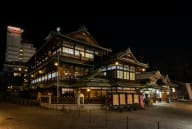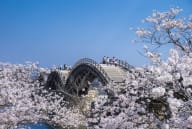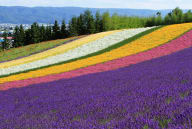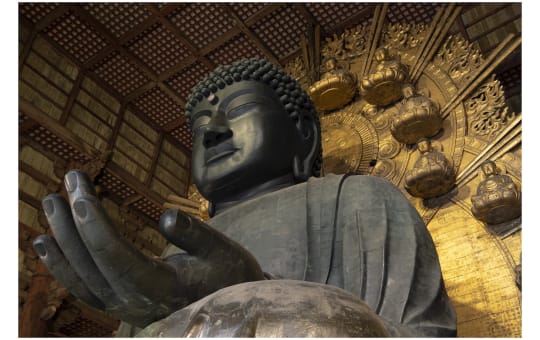Célébrant son 1300ème anniversaire, ce temple a profondément influencé la culture japonaise
Le temple Kofukuji compte quatre bâtiments classés trésor national : la pagode à cinq étages, la pagode à trois étages, le Hokuendo et le Tokondo.
À ne pas manquer
- La deuxième plus grande pagode du Japon
- Découvrir les vestiges culturels du clan Fujiwara
- Les cerfs qui se promènent librement dans le parc de Nara
Comment s'y rendre
Le parc de Nara se trouve à une courte distance à pied de la gare ferroviaire. Les trains à destination de Nara partent régulièrement d'Osaka et de Kyoto, ainsi que d'autres grandes villes.
Le temple Kofukuji est accessible en 5 minutes à pied depuis la gare de Kintetsu Nara, ou en environ 20 minutes de marche depuis la gare de Nara.
Si vous arrivez à la gare JR, vous pouvez emprunter un bus circulaire pour vous rendre au parc. Le bus 2, ainsi que tous les autres bus à destination de Kasuga Taisha, déposent les passagers à l'arrêt Kencho-mae, situé à une courte distance de marche du temple.
Une longue histoire
Le temple Kofukuji a été construit en 669 par la famille aristocratique et politiquement puissante des Fujiwara. Plus tard, il a été transféré à Asuka, lorsque la capitale a été déplacée, et a été nommé temple Umayasakadera. Il a été ensuite transféré à Nara lorsque la capitale a été relocalisée à Heijo-kyo (l'actuelle Nara), et a été rebaptisé temple Kofukuji.
Une pagode à cinq étages
Si vous avez un faible pour les pagodes, vous tomberez sous le charme du temple Kofukuji. Atteignant 50,1 mètres de haut, sa pagode de cinq étages est la deuxième plus grande pagode en bois du Japon, derrière sa voisine de Kyoto , et un symbole de l'ancienne capitale de Nara.
La pagode a été construite vers 730 et reconstruite cinq fois après avoir été détruite par des incendies. La pagode actuelle, qui date d'environ 1426, dégage un sentiment impressionnant du fait de sa longue histoire.
Les pavillons octogonaux Endo
Deux des curiosités du site sont les pavillons octogonaux, qui attirent de nombreux visiteurs. Le Hokuendo a été construit en 721 et est considéré comme le plus beau pavillon octogonal du Japon. Le Nananendo a été construit environ 100 ans après le Hokuendo.
Le Chukondo est un bâtiment situé au centre de Kofukuji, et l'un des plus importants. Il a longtemps été une salle temporaire, mais en 2000, il a été démantelé et restauré dans le style de sa construction d'origine, un processus qui s'est achevé en 2018.
Les statues
Le Kofukuji contient de nombreux documents et trésors extrêmement précieux de l'histoire de Nara comme capitale du Japon. La plupart sont exposées au musée des trésors nationaux de Kofukuji.
Outre les représentations dorées de Bouddha, divers chefs-d'œuvre sont conservés, dont une statue d'Ashura en laque sèche et la tête en bronze de Yakushi Nyorai, le Bouddha de la médecine.
Le temple est un précieux lieu d'entreposage de trésors, notamment des sculptures bouddhistes, des peintures, des artefacts, des livres, des documents anciens et d'autres objets qui racontent l'histoire de Kofukuji.













































